On my substack, Dominarian Plowshare, I’ve previously described Universes Within as flavor-blasted Magic. With no flavor text, no accompanying web fiction, and no explicit story, Universes Within releases have to channel all their worldbuilding energies into ephemeral names and tantalizing artwork—pure, condensed flavor.
September’s Through the Omenpaths1—a digital-only release that reskins the cards from Marvel’s Spider-Man to fit in the Magic multiverse—takes this principle to the extreme. With 188 cards, OM1 comprises a torrent of impressions, glimpses, images, of Magic multiverse, but it doesn’t articulate any explicit story. In this sense, it’s a flavorblasted flavorblast: Turbo-Baja-Blast-Supersize-Me-Double-Whopper-Live-Más Magic (TBBSMDWLM Magic, for short).

“King of the Coldblood Curse” by Andrew Mar
What this amazing and objectively correct terminology signifies is that OM1 amplifies all that’s heartwarming and all that’s heartbreaking about Universes Within. The whispering possibilities of Magic worlds swirl together with the quiet emptiness of incomplete stories. Who is the King of the Coldblood Curse? Where is the Temple Trap into which unsuspecting victims tumble? What’s the meaning of the strange geodic parasites that replace Marvel’s Symbiotes in Skv’x the Augmenter and Bane-Marked Leonin? We can get hints, but we’ll never really know.
Except if you’re working on the OM1 Flavoring Project. This project and its creator ask: why can’t we?
Words for the Wordless
On September 16, 2025, eight days after the Through the Omenpaths card image gallery went live, Reddit user -TvT- posted a thread on the r/mtgvorthos subreddit: “Through the Omenpaths Set Flavor Text (Bloomburrow & an Innistrad).”
“The most pressing thing that separates 150 Omenpaths cards from ‘real’ cards,” -TvT- suggests in this post, “is flavor text. The cards I see printed just don’t look good without it.” And since the OM1 creative team didn’t have time to produce flavor text for the digital set, -TvT- took it upon themself to do so.
In this first post, -TvT- shared eight OM1 cards they had flavored themselves, adapting Spider-Man cards into the worlds of Bloomburrow and Innistrad. Although -TvT- didn’t spell out their design principles—not yet, anyway—certain aesthetic sensibilities were already clear. The “new” OM1 flavor aimed for the same number of lines (and a similar number of characters, if possible) as corresponding SPM cards. It attempted to channel the subject plane whenever possible. It mixed pure worldbuilding with aphoristic humor, like the flavor of classic Magic; and, in many cases, it dialogued with the original Marvel’s Spider-Man flavor text.
I’ll speak more on these principles in a moment, but for now, let’s watch the project develop.
The day after posting, -TvT- posted their initial thread—having received 39 largely supportive comments and over 300 upvotes—they posted two new threads, the latter of which graced their project with a name: “OM1 Flavoring Project (CARD 1: The Infernus).”
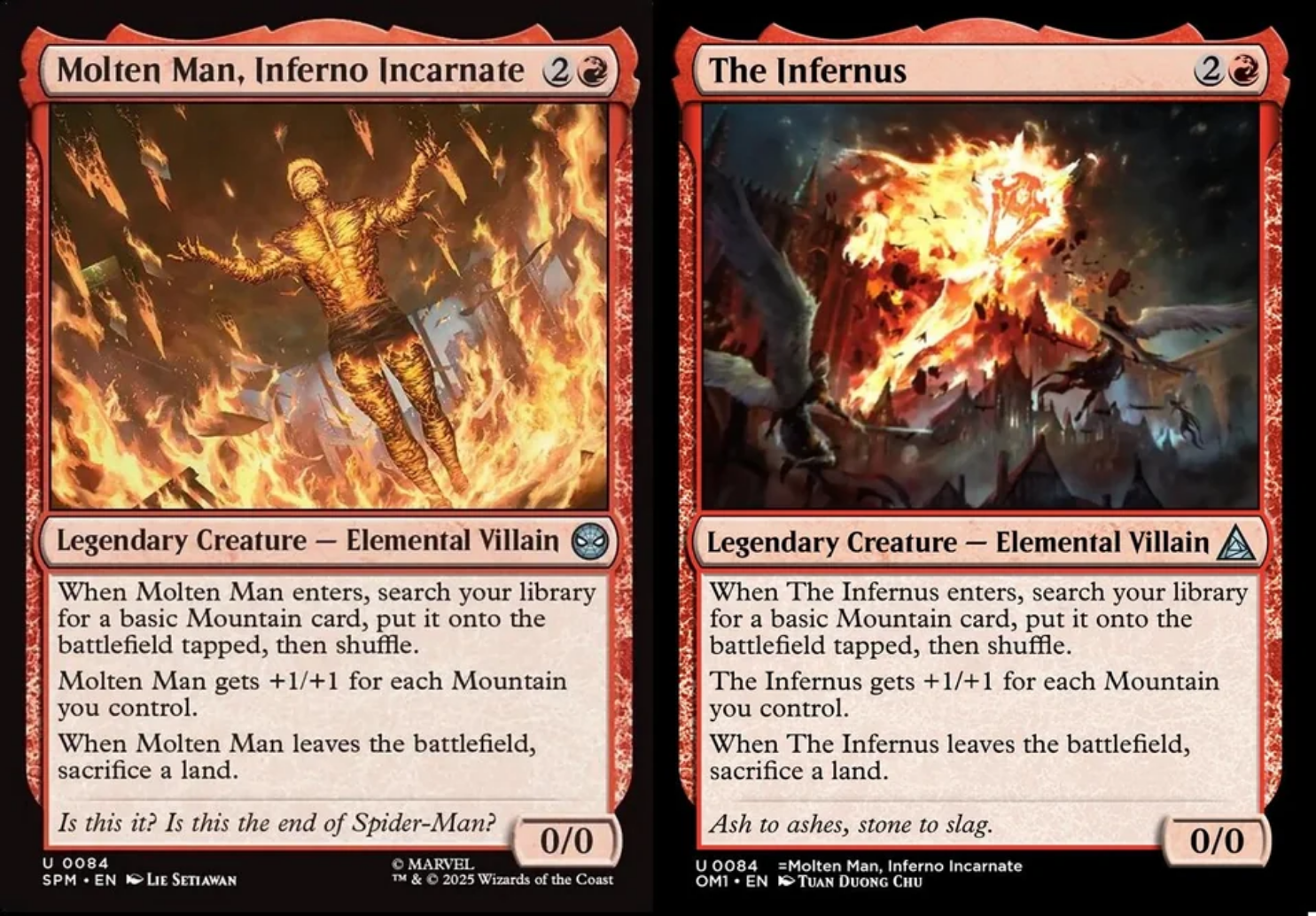
Inside the thread, users suggested and discussed and debated options for the card’s flavor text, imaginative energies crackling together and then birthing. The next day, the “official” result for The Infernus dropped: “Ash to ashes, stone to slag.”
In a matter of one day, a provisional experiment had become a full-blown capital-p Project.
Giving this venture a name was an act of self-authentication, of conjuring officialdom. But it also contains a promise: “CARD 1” implies that, one day, we’ll see a post subtitled “CARD 150.”
In the weeks since, the Project has completed flavor text for over 30 cards. During this process, -TvT- has taken on the role of a sort of editor-in-chief: each day, they select one or two cards to reflavor, open up discussion, comment on potential ideas, and make a final determination about the final text.
They do so based on a set of guiding principles, the most important of which is simple–the new flavor text actually has to fit on the card. Beyond that, things get looser. Users are invited to suggest text that might “‘rhyme’” with the original SPM card, that might evoke why a character deserves the new “hero” and “villain” monikers that SPM introduced, or that might simply “go where the art and story of the card mechanics” take the imagination.
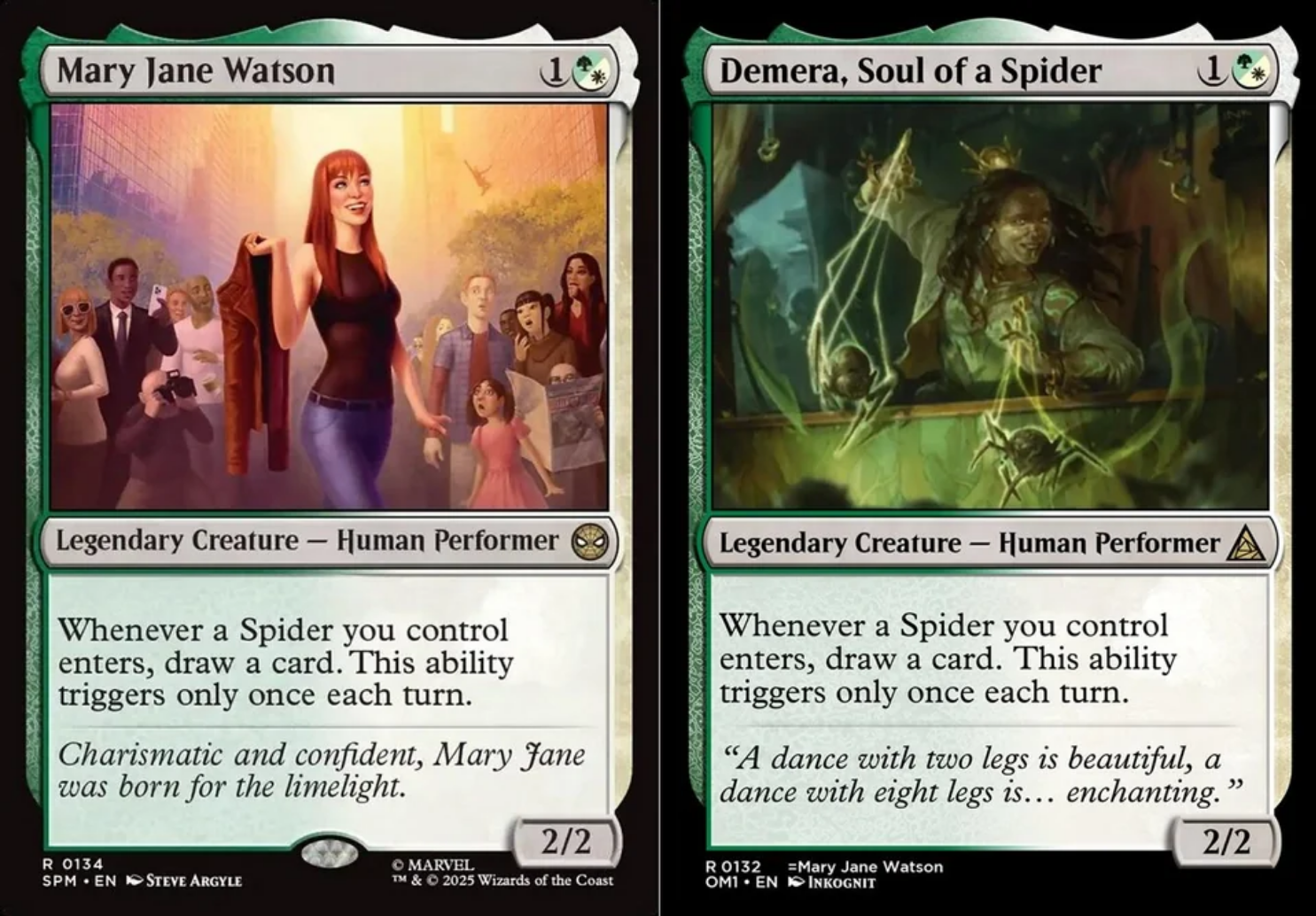
Beyond these guidelines, -TvT- has declined to comprehensively explain the rationale for their final decisions. Doing so, they write in a later post, might make “more competitively minded folks…start seeing this as a contest. And lemme tell ya’, Reddit’s upvote system is TERRIBLE for contests.”
Indeed, contra Reddit’s brute-force popularity-contest structure, most of the final flavor texts are not those that have been most heavily upvoted. Instead, -TvT- uses their judgment and sometimes makes creative tweaks. The flavor text for “The Infernus,” for example, was not the top-voted suggestion (which was, in fact, -TvT-’s own), nor the second; the honor went to the third-most-upvoted Total_Bird5493, whose “Prayers fell to pyres, stone fell to slag” -TvT- adapted into the final version.
The spirit of the project, then, is to be thoughtful without being authoritarian. As -Tvt- explains, “There will be times that I won’t pick the top comment. There will likely be times you disagree. That’s okay. I begrudge no one the option of making their own versions with their own choice of flavor text because I am an amateur with zero authority.”
Technically an amateur though they might be, they’ve been able to create a project that brings OM1 to life.
Flavor Adjustment
It’s difficult enough to write flavor text as a professional. Doing so demands a writer blend the content of Wizards of the Coast’s internal worldguides with hints buried in art and fill in imaginative lacunae.
But—and I say this as someone who’s ventured to suggest a few lines of flavor text for the OM1 Flavoring Project, and, in fact, got -TvT-’s stamp of approval on one—it’s even harder when all you have is art and mechanics. It’s for this reason that the Project’s creative success is so admirable.
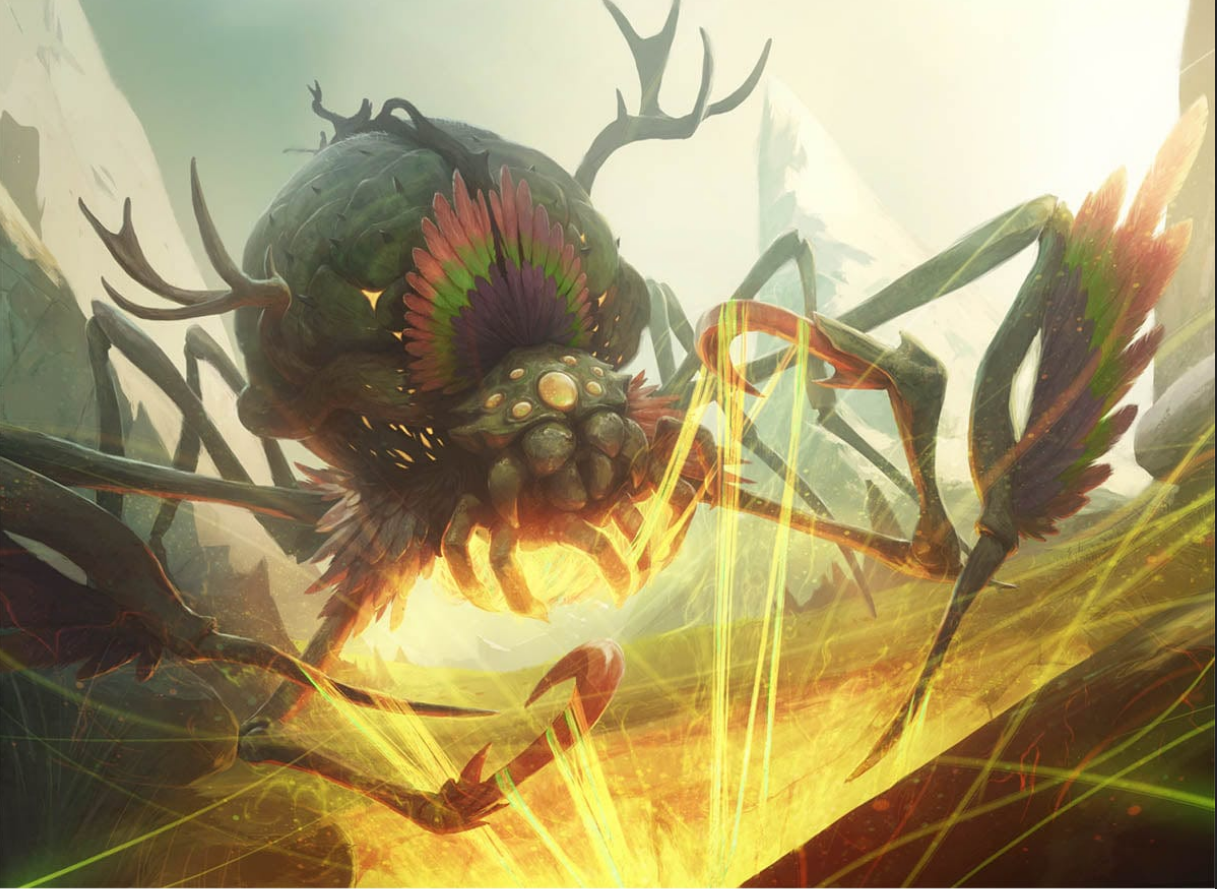
In writing this article, I corresponded with -TvT- over DM, and during our conversation they explained that at the heart of the Project is a “humbling” act of creation:
“It’s hard to explain, but I can see sort of a kinship between little Leyline Weavers in OM1, the creatives within Magic, and in some small way, myself. All of us small, innocuous little things that are just trying to make sense out of an unlimited stream of Multiversal Everything.”
There’s a touching parallel here, a harmonic resonance between creators and players and the cards themselves: from salvage, salvation.
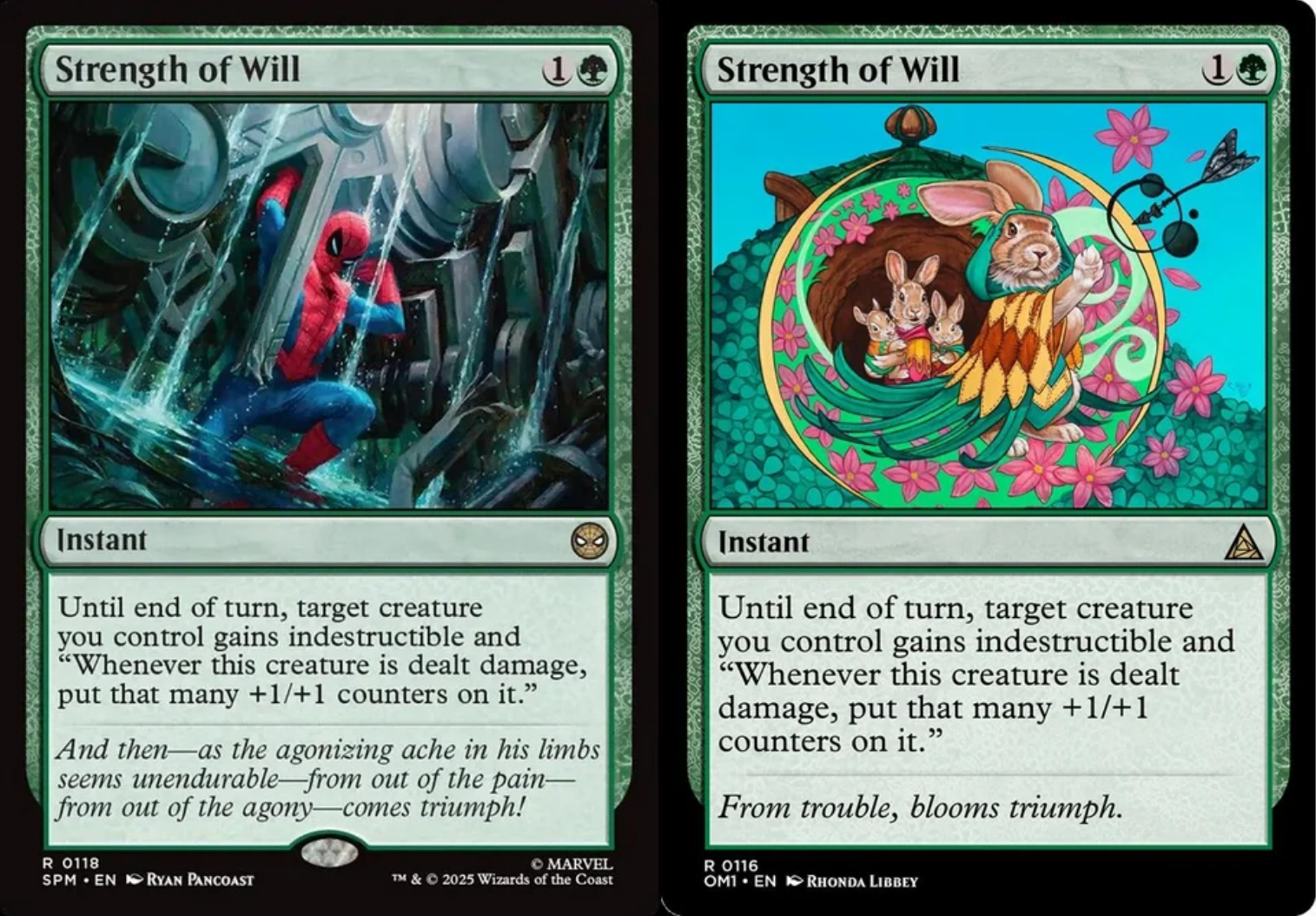
In some cases, this has looked like respinning SPM’s melodramatic comic-book-style narration as poetry. For instance, where SPM’s Strength of Will draws its power from the classic Spider-Man story inspiring its image, the Flavoring Project confers pithy elegance on the OM1 card of the same name: “From trouble blooms triumph.” The shorter text better suits Rhonda Libbey’s subtle, elegant storybook style: this miraculous victory needs the language of aphorism, not pronouncement, to evoke cosmic drama. (It’s not surprising to me that -TvT-’s favorite flavor texts are those that “can tell a full story in only a few lines,” like Squandered Resources.
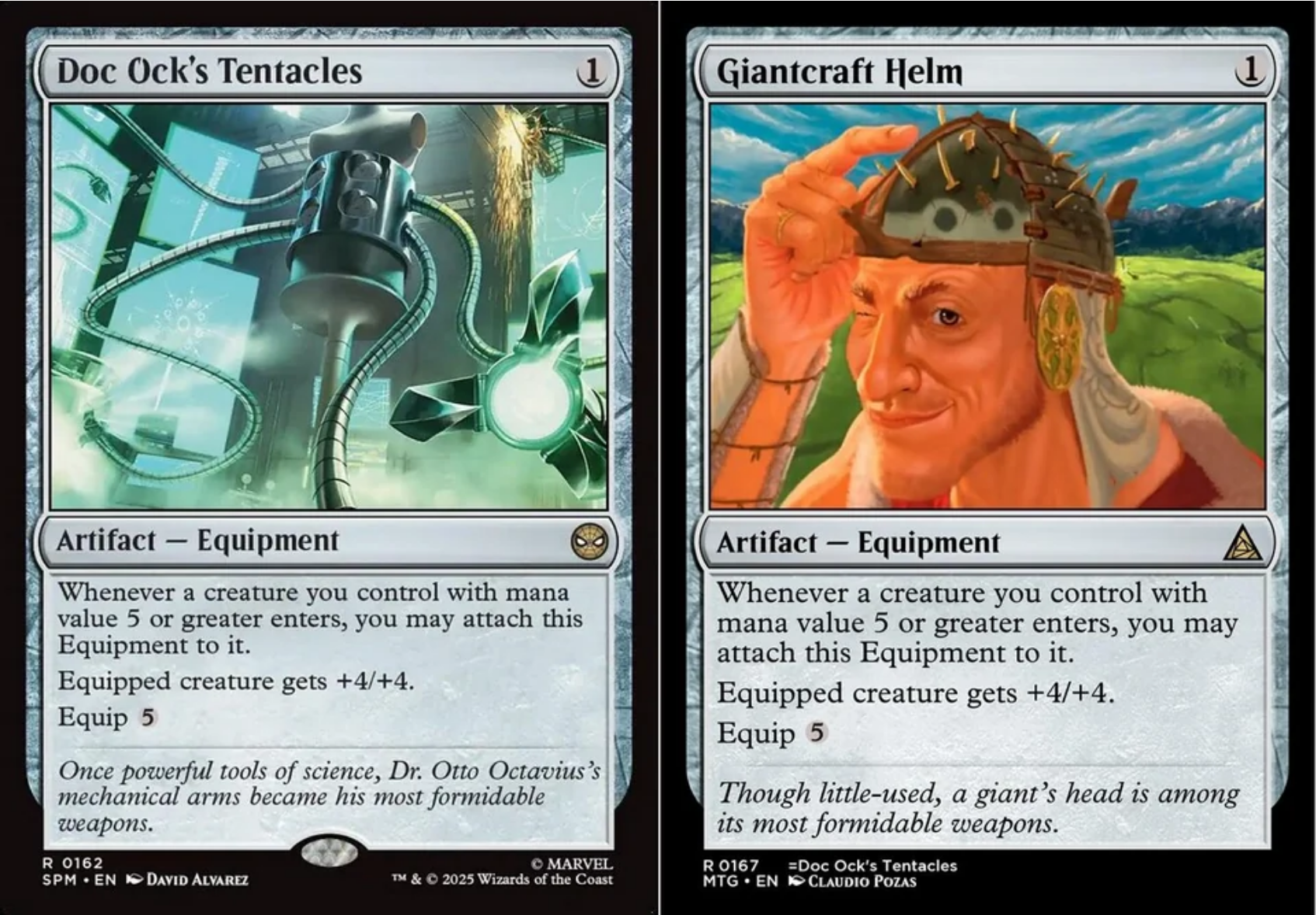
In other cases, the new flavor evokes vibrant life in its subjects. Where flavor text derived directly from comic books, like that on Thwip!, are a little too campy for an in-universe Magic card, the Project’s version of Lively Leap is pure euphonious joy.
Other Flavoring Project cards are effective because they strike a thought-provoking contrast with SPM cards. One of the most intriguing artistic transformations in OM1 was that from With Great Power… to Chosen by Valgavoth —wherein a paean to heroic sacrifice becomes an unsettling account of cultish devotion: “Grand purpose requires grand sacrifice.” Similarly, the melancholic story of Spider-Man No More becomes the touching joy of Hide in Mundanity: “It was a quaint new life, but refreshing to have only one face to worry about.” And in transformations like that of Full-Throttle Fanatic, a corny joke from everyday New York City (“‘I got two speeds, buddy: fast and off duty.’”) and becomes a sick statement of purpose on post-apocalyptic Gastal (“The Endriders have two speeds: fast and dead.”).
As these texts suggest, the Flavoring Project participants have made great use of linguistic reversal, which, as I’ve suggested elsewhere, is a common technique in Magic flavor text. But rather than deploy such reversals for anticlimactic womp-womps, they’ve been able to knit language into lines that evoke old-school Magic flavor, like Giantcraft Helm: “Though little-used, a giant’s head is among its most formidable weapons.”
Reading this one, I must confess, felt to me like finding a card that got lost under Mark Rosewater’s desk in the late 90s (fitting, since, as -TvT- said to me, the card’s art “wouldn’t be all that out of place on a 7th Edition card.”)
The Deleted Scenes of History
This is to say nothing of the Project’s efforts to create entirely new stories. Or, better put, to alchemize such stories, arcanely synthesizing paltry hints and incomplete imagery into vivid tastes of real characters.
In the post that (at the time of writing) boasts the most comments of after -TvT-’s initial post, community members pondered how to flavor Fizik, Etherium Mechanic. The challenge, as -TvT- suggests in the thread, is to explain “how this lil’ bug is a ‘hero’ and/or what the heck is going on with Etherium these days.”
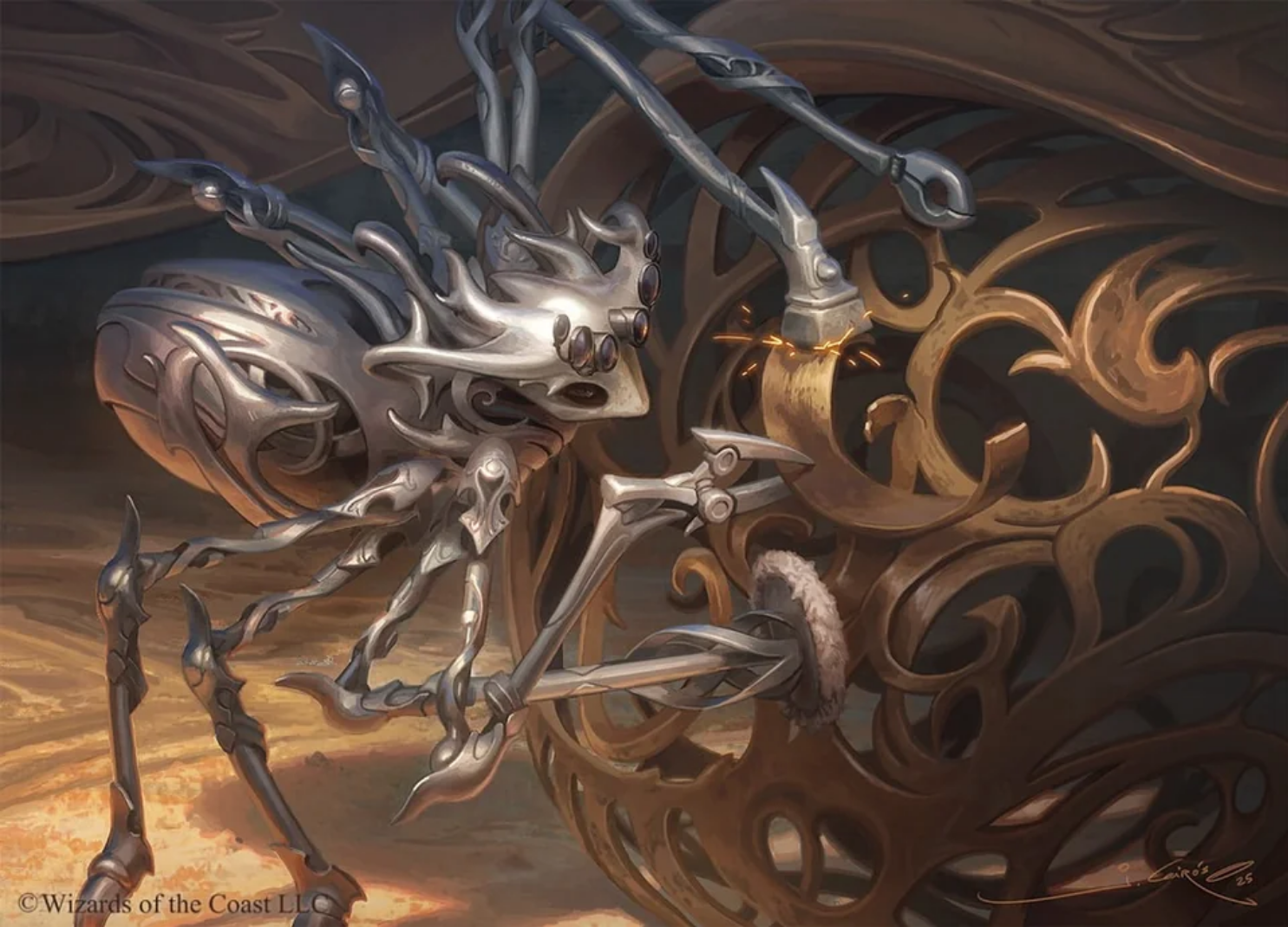
In search of an answer, the thread’s commenters spilled plenty of ink (or consumed plenty of Joules typing) to dissect Joshua Cairos’ illustration and disquisition on the history of the Esper shard. Was the golden filigree image from Avishkar or Alara? Might Fizik—as a multi-paragraph projective backstory suggests—be a medical worker who’s also a devotee of Esper’s Noble Work?
The solution to this particular puzzle came from u/MangaBookClub, who drew inspiration from the SPM card’s text and imagined Fizik as a philanthropic healer amid Esper’s brutal caste system: “Despite their appearance, Fizik was one of the few shapers on Esper whose repairs came without any strings attached.”
Flavor texts like this are effective not so much for their virtuosic turns-of-phrase as for the imaginative bricabrac of which they’re made. The users in this thread had hints about what Fizik might be—Esper, somehow a hero, monikered as a mechanic—but needed to unfurl images and stories and ideas from the soupy imaginative gestalt that is Magic in order to make it make sense.
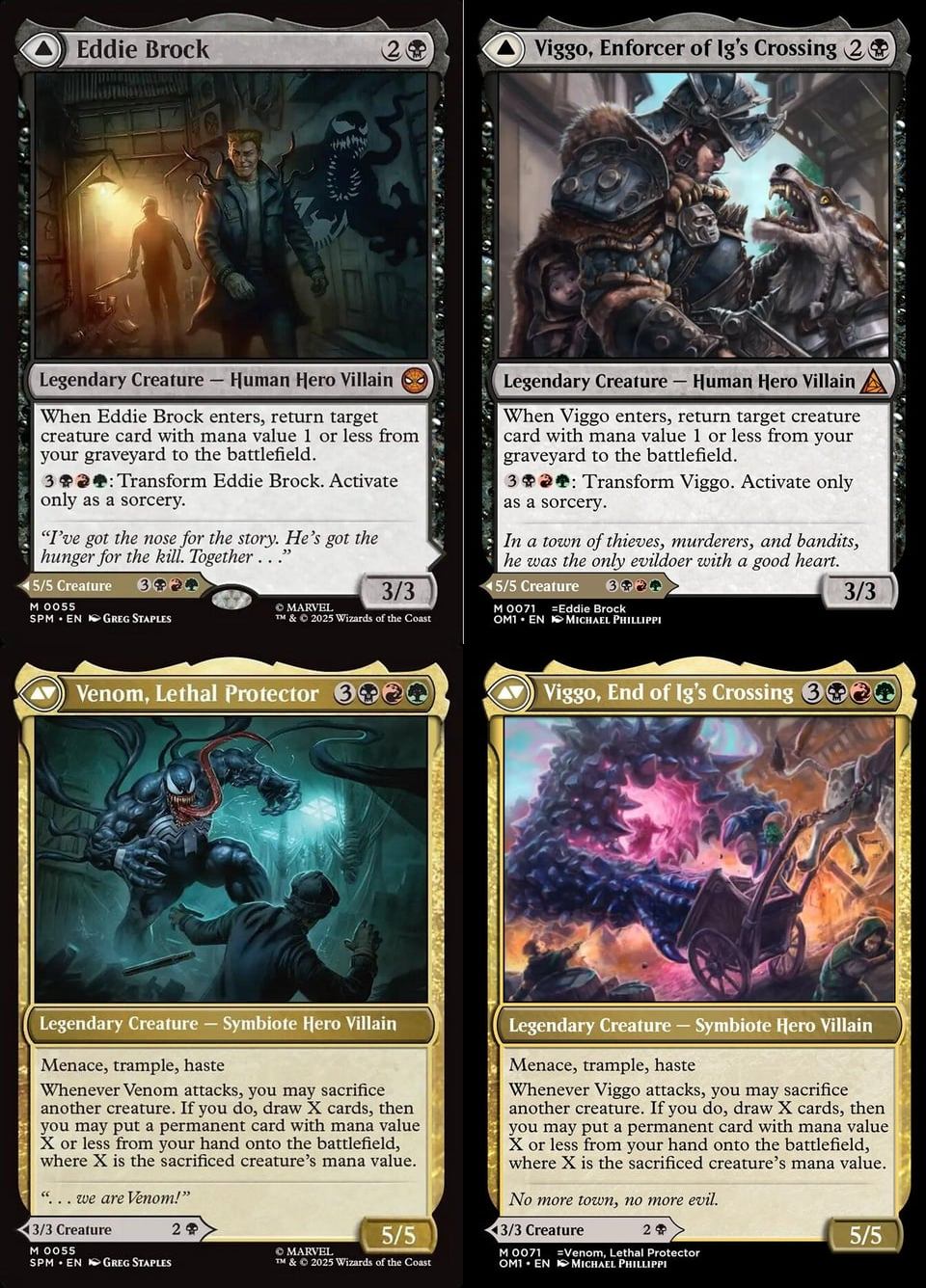
Doing so becomes even harder when it comes to SPM’s MDFC cards, four of which have flavor text. How are we to tell a story–start, change, end–when we don’t understand all its terms? The flavor for Viggo, Enforcer of Ig’s Crossing represents the answer. The frontside is made to show the first part of a story, backside its ending—the middle made into an unspoken transformation.
In all these cases, rich possibilities seem to glow inside the tiniest spaces. Indeed, this tension is at the heart of the Flavoring Project. As -TvT- suggested to me, OM1’s story is itself a kind of meta-narrative, activating the tensions barely contained within Marvel’s Spider-Man. This is because, they suggest, SPM perfectly encapsulates Magic’s burgeoning philosophy of product design:
One reading of the MTG: Marvel’s Spider-Man set is that Magic can be everything. To me, it is a perfect representation of the new-wave product vision: that, much like the Spider-Verse itself, this game can be everything to everyone…Everyone can have their own Spider-Man, y’know? One Spider-Man for almost every color identity. Everyone can have their own “Magic set,” too. Your dad could play Jaws or Star Trek, your niece could play Furby or Final Fantasy, or maybe you could get your partner interested via The Office or The Walking Dead. And all of these universes have their own Command Towers, their own customized alt-art and alt-names. How incredibly ironic, then, that this very set—an almost hedonistic display of spider-extravagance—found itself immediately constrained. The scope was widened by a factor of a few dozen extra cards, it was pushed to be Standard playable, and it could not be played digitally.
OM1, in turn, “is the dark mirror of Marvel’s Spider-Man. The infinite-ness is constrained to “whatever we can get to fit on already-completed cards.” And this, they say, is “incredibly intriguing to me, more than any other set in recent years. It feels like we’re getting to go through deleted scenes of history.”
The Flavoring Project, then, is experimenting with the terms of what makes Magic what it is. They refuse the notion that players are inert objects of the ongoing deluge of cards and universes and products; instead, they locate in our constrained moment the possibility of breathing life into Magic’s fragments. From the provocative scraps and incantatory half-heard hints, they are kindling life.
Halfway Told
There’s a moving lesson to be found in the work of the OM1 Flavoring Project.
In principle, Magic’s worldbuilding is authoritarian rather than democratic: the seal of canonicity is embossed only by people employed or contracted by Wizards of the Coast. All else is aftermarket imitation; if the WoTC team doesn’t finish a project, it doesn’t get finished.
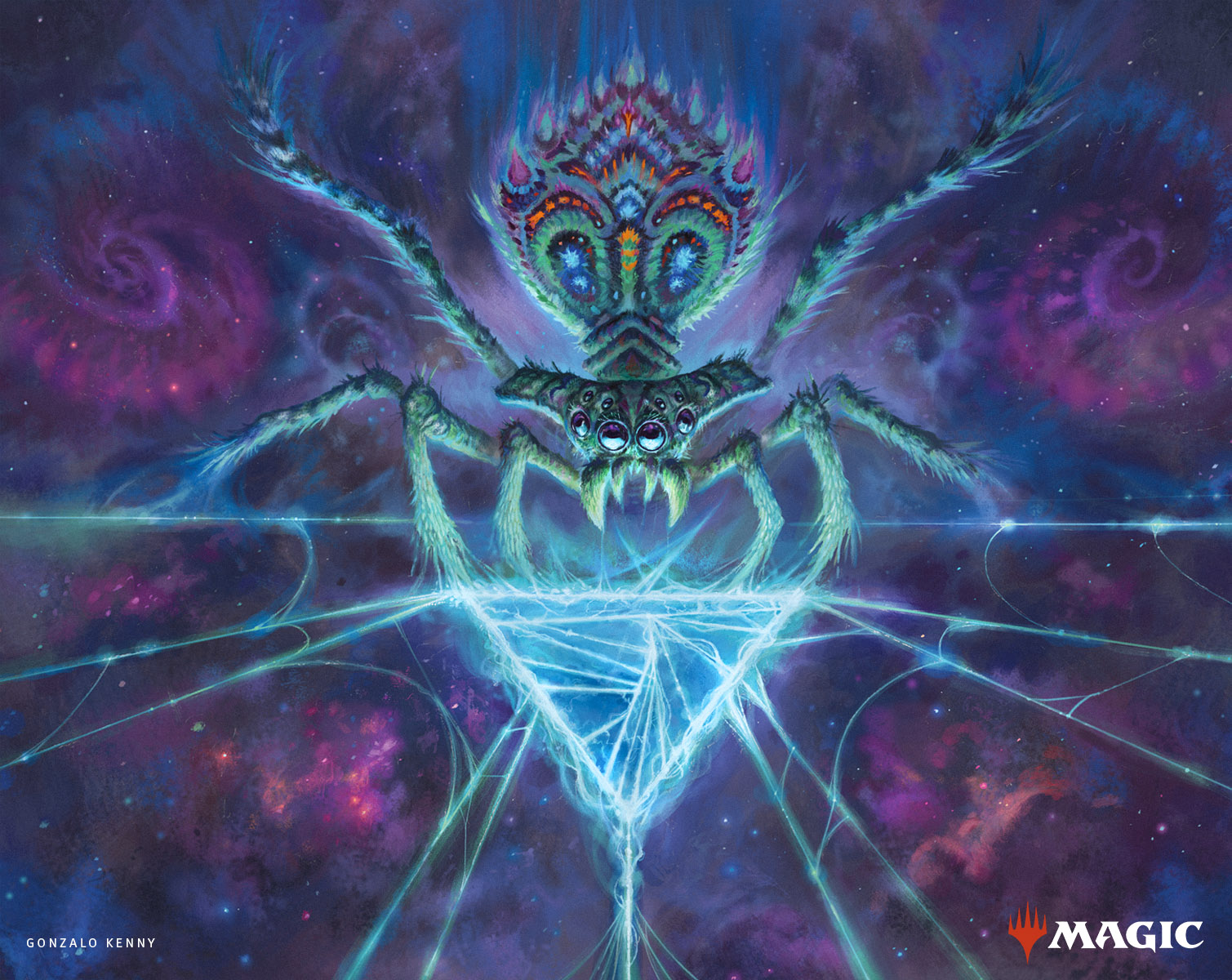
And yet, a rather small group of people cares enough to try—to help capture in words, and thereby potentize, the strange phantasmal energy pulsating in OM1’s illustrations. The story latent in those cards, whispering like a presentiment of a world to come, is to be heard not just in WOTC offices but in the imaginations of those who listen. After all, is it the legally binding copyright seal that makes “Hatred outlives the hateful” so great—or is it something else, some force that belongs to but exceeds artistic authority?
I’m not trying to suggest that fan contributions are somehow better or more sincere than those of WOTC storytellers; that seems patently untrue. But this project does seem to tell us something about the kind of narrative that Magic conjures, and even more, who has the power to create it.
In a September 24 post, -TvT- articulates just this idea. Midway down a check-in post, they pose the question “What is Through the Omenpaths’ story”?—and then offer two answers:
“There isn’t one. It’s a hastily sewn-together quilt of first-pass, second-hand art with spiders painted on it; an embarrassing faux-pas that speaks to the continued struggle for the creatives within Wizards to muddle through and misdirect from the growing corporate mismanagement of a creative endeavor.”
“Maybe. Perhaps that’s all it is. I personally see a story halfway told and waiting to be completed. A story of a universe bursting with unlimited possibility as the omenpaths opened, butincreasinglyfull ofunknowabledanger and cracks forming beneath the surface.”
This sentiment keeps me going. This is a refusal to be sucked into entropic meaninglessness. This is an act of praise for the gasping hints and whispering spectral life—the humanity, in other words—coded within even the supposed throwaway art in a stopgap set. And most movingly of all, it’s a humble admission that bumps against the very best thing about Magic: it is entirely unnecessary.
A sophisticated card game doesn’t “need” a compelling fantasy backdrop, a digital set born from copyright snafu doesn’t “need” intriguing art, and stopgap print-ready versions of said digital set doesn’t “need” flavor text. But they have them anyway. Because, in fact, the gestalt-thing we call Magic is born out of these kinds of acts–of noticing blanks and then, with the lightest touch, filling them in.
And there’s good news: if you go to r/mtgvorthos and look out for the OM1 Flavoring Project, you can do it, too.
Ryan Carroll (he/him) is a writer and Ph.D. candidate in English and Comparative Literature. On Substack as Dominarian Plowshare, he writes about Magic’s art, story, and experience. Outside of Magic, he writes on topics including 19th-century literature, information theory, television politics, and cliche.

